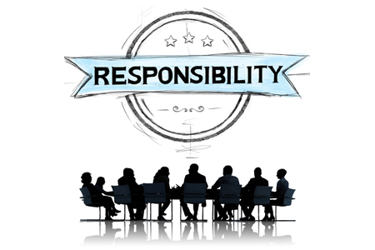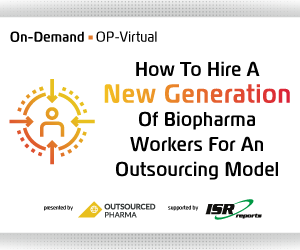CDMOs Should Take On More Project Ownership

By Louis Garguilo, Chief Editor, Outsourced Pharma

“Pharma companies used to employ multiple CROs and CMOs, and perform various transfers. That was a tremendous financial and timeline burden, with added technical and supply risks.
It contributed to tension inside the pharma companies, between the R&D and commercial-supply organizations, which have different priorities and deliverables.
Now, many CROs and CMOs have morphed into CDMOs by adding development capabilities or by M&A activity. They advertise themselves with ‘end-to-end’ offerings, specifically when it comes to final development and manufacturing.”
And thus, says our interlocutor, these CDMOs can and should also take on more project ownership as well.
Own Up
Jana Spes career spans development and commercialization at companies such as Pfizer, J&J, and Ferring Pharmaceuticals. A few years ago she planted her multifarious flag at Ironwood Pharmaceuticals, as Head Of Pharmaceutical Development & Manufacturing Sciences.
“CDMOs are tooled-up to deliver various services and products; hence, efficiencies have increased in the outsourcing pharma companies’ development organizations,” Spes says. “You just don’t need such large internal teams anymore.”
Instead, needed are multi-versed internal resources that understand and can oversee those growing external capabilities and operations.
Spes recalls during Pfizer’s launch of Viagra, “It required a small army of internal resources with varying specialties and responsibilities for process development, engineering equipment design, formulation, and packaging.”
The external contractors employed to help were only to execute on specific orders. All the work and designs were done first by the sponsor.
“Today, all those activities can be accomplished with much smaller teams at the sponsor, because expertise resides within the CDMOs,” she says.
And so should an added level of responsibility.
Experienced Contemplation
Spes recalls her first day at a biopharma organization some years ago. The production team was engaged with a key Canada-based supplier, which had just been deemed “unreliable.”
Even though new to the situation, she says, experience informed her “things are never so simple.”
She helped catalyze an effort to further evaluate what was transpiring before any decisions to leave that supplier were undertaken.

This particular CDMO was producing an essential life-saving medicine. The product was highly sensitive to temperature, and required strict refrigeration protocols to maintain shelf life. Any manufacturing variability could cause serious production problems.
In fact, the manufacturer had experienced several batches that trended out of specification. “It was like a status-quo black hole,” she recalls. Her employer was facing a potentially devastating drug shortage.
“Our quality and process teams were not able to identify the probable cause. Things would temporarily get better, and then return to out of trend,” she says.
Spes and others at the company decided to take a new tack.
They held face-to-face meetings at the supplier to discuss how to conduct new kinds of investigations into the issues.
“This was around the time when the CDMOs themselves were starting to employ multi-experienced individuals,” recalls Spes, “and particularly people who were Six Sigma Black Belt trained.”
“Once we agreed on using a structured Six Sigma approach, dug into the data, and investigated more systemically, we were able to elucidate the situation.
“We identified the root cause, which it turns out was a single piece of equipment causing minute contamination impacting product shelf-life.
“It’s actually quite a typical story,” muses Spes.
She believes it came down to a matter of communication, and building trust to get started a new. “It’s still the best approach in my opinion,” she says.
“Then, a better utilization of data, and a certain sophistication around the data was also needed. It required modeling, whether it’s looking retrospectively at the process performance or future performance. Both sides needed to take responsibility.”
It also required well-rounded individuals at both the drug sponsor and service provider to work together.
Spes asserts this area of data analysis specifically is one where CDMOs can further improve.
“They’re generating so much data on our behalf,” she explains. “They should also increase their intellectual muscle so they can apply the product and process data in a value-added way.’
“In this particular case, the product was subsequently reformulated to maintain stability at room temperature. Today it continues to play a critical role in saving lives, especially in developing countries around the world.
“That’s what this relationship and business should always be about.”
She pauses here, then adds, “And a most salient point is this: Years of multiple experiences allow you to see things from many angles.”
“You can foresee what ‘good’ looks like, and know how to get to that state. You can think through some of the changes and tweaks, whether they’re systems or people.”
“I’m definitely looking for people at CDMOs who are very current on industry practices, and who can speak the QbD language and understand QbD-based development.
“Then I identify teams that know how to model and apply data for process control and improvements, and those that have various experiences.
“And finally, I want to hire those CDMOs that take shared accountability and more ownership of the projects, products, and of the relationship.
“Unfortunately, that final component is still difficult to come by.
“If the final responsibility lies solely with sponsors, then I don’t believe we can outsource as much as we would like.
“There still needs to be a higher degree of joint accountability that I can actually feel from the CDMO … it’s a kind of trust.”
-------------
This editorial is revised from the original in Life Science Leader’s 2020 CMO issue.
Read Part 1 of this discussion with Jana Spes of Ironwood Pharmaceuticals

